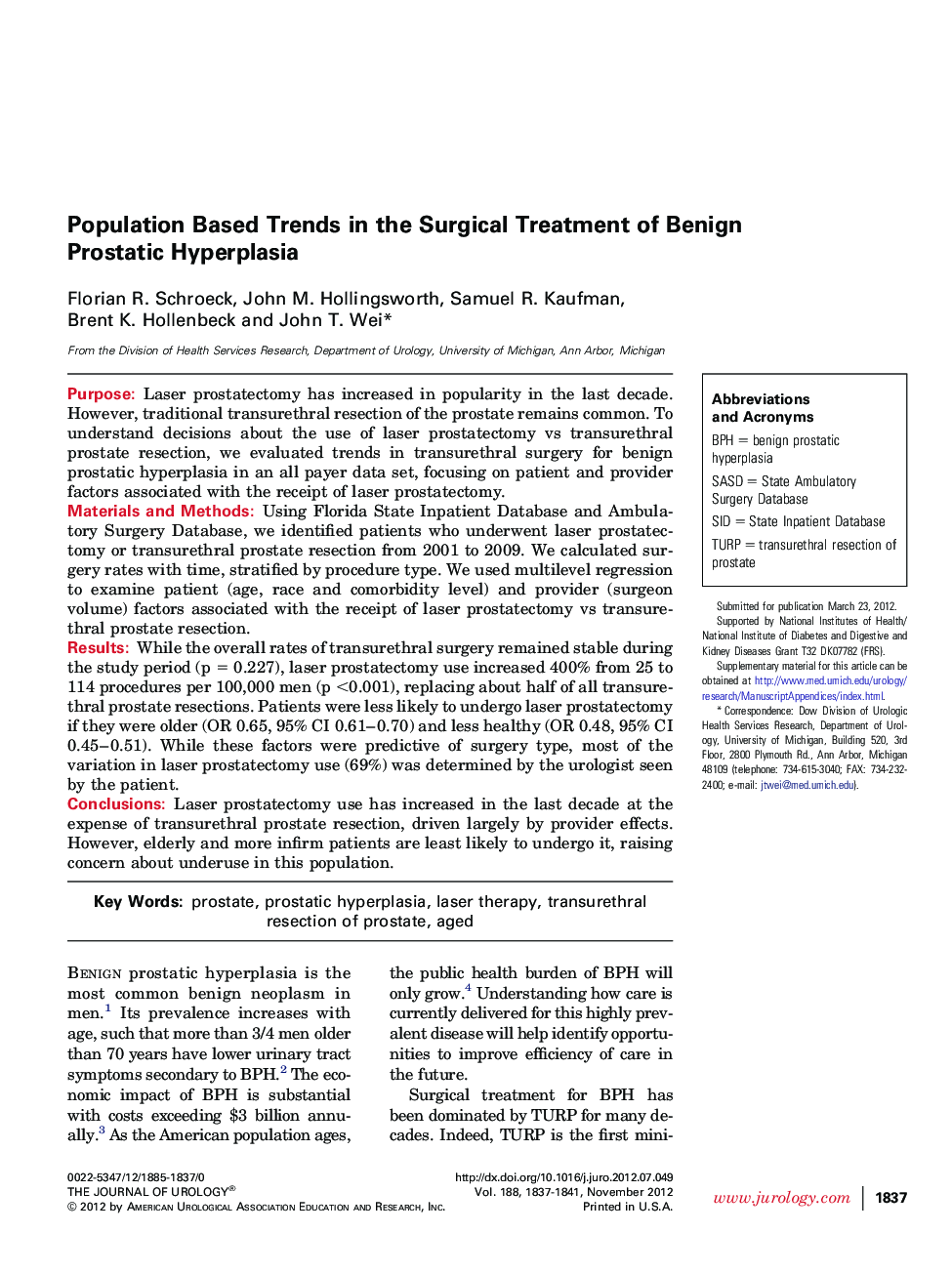| Article ID | Journal | Published Year | Pages | File Type |
|---|---|---|---|---|
| 3866054 | The Journal of Urology | 2012 | 5 Pages |
PurposeLaser prostatectomy has increased in popularity in the last decade. However, traditional transurethral resection of the prostate remains common. To understand decisions about the use of laser prostatectomy vs transurethral prostate resection, we evaluated trends in transurethral surgery for benign prostatic hyperplasia in an all payer data set, focusing on patient and provider factors associated with the receipt of laser prostatectomy.Materials and MethodsUsing Florida State Inpatient Database and Ambulatory Surgery Database, we identified patients who underwent laser prostatectomy or transurethral prostate resection from 2001 to 2009. We calculated surgery rates with time, stratified by procedure type. We used multilevel regression to examine patient (age, race and comorbidity level) and provider (surgeon volume) factors associated with the receipt of laser prostatectomy vs transurethral prostate resection.ResultsWhile the overall rates of transurethral surgery remained stable during the study period (p = 0.227), laser prostatectomy use increased 400% from 25 to 114 procedures per 100,000 men (p <0.001), replacing about half of all transurethral prostate resections. Patients were less likely to undergo laser prostatectomy if they were older (OR 0.65, 95% CI 0.61–0.70) and less healthy (OR 0.48, 95% CI 0.45–0.51). While these factors were predictive of surgery type, most of the variation in laser prostatectomy use (69%) was determined by the urologist seen by the patient.ConclusionsLaser prostatectomy use has increased in the last decade at the expense of transurethral prostate resection, driven largely by provider effects. However, elderly and more infirm patients are least likely to undergo it, raising concern about underuse in this population.
